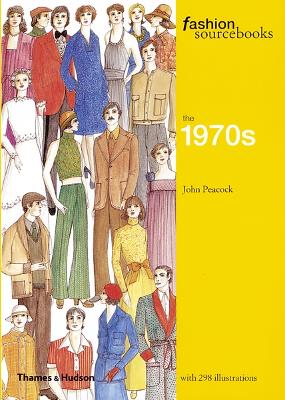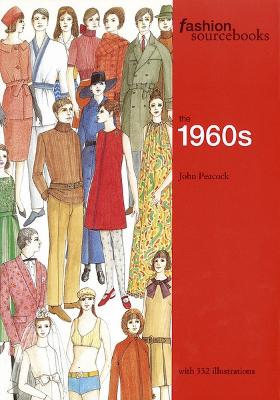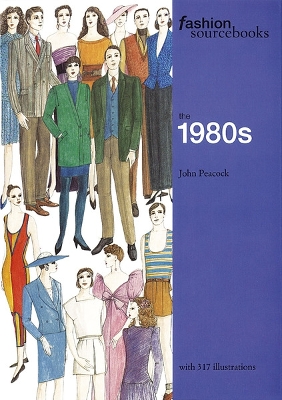Fashion Sourcebooks
3 total works
In the 1970s, fashion became increasingly individualistic for both men and women. Off-the-peg clothes – chiefly in classic, easy-to-wear styles - were mixed with vintage fashions and with ethnic garments and accessories from around the world. The year-by-year format allows these changes to be shown in fascinating detail. Day Wear, Evening War, Sports and Leisure Wear, Accessories, Underwear and Wedding Wear are included, and complete descriptions of each garment accompany the drawings, itemizing colour, cut, necklines, lapels, sleeves, pockets, fastenings, buttons, belts, etc.
The reference section includes a chart summarizing at a glance the evolution of fashion and garment-shapes, as well as biographies of outstanding 1970s designers and a bibliography.
John Peacock's Fashion Sourcebooks are destined to become an indispensable part of the library of any fashion enthusiast, historian or collector, and are sure to provide inspiration to any designer or student working in the performing arts.
The reference section includes a chart summarizing at a glance the evolution of fashion and garment-shapes, as well as biographies of outstanding 1970s designers and a bibliography.
John Peacock's Fashion Sourcebooks are destined to become an indispensable part of the library of any fashion enthusiast, historian or collector, and are sure to provide inspiration to any designer or student working in the performing arts.
In the 1960s, "youth" was the watchword. Skirts became shorter and shorter until in 1965 the mini was born with the quintessential little-girl look: neat, flat-chested and long-legged. By the last years of the decade, the influence of the hippy movement was beginning to be felt in both women's and men's wear, bringing with it bright colours and psychedelic patterns. This book is part of a series charting the development of women's and men's clothing from 1900 onwards. It includes complete descriptions of each garment and accessories, itemizing colour, cut, necklines, lapels, sleeves, pockets, fastenings, buttons and belts. The year-by-year format progresses through day wear, evening wear, sportswear, leisurewear, underwear, negligee and wedding wear. The text is accompanied by costume drawings by John Peacock, and includes a chart summarizing the evolution of fashion, garment shapes and biographies of the outstanding designers of the decade.
Fashion in the 1980s tended towards the functional and the formal. The typical 'power dressed' woman of the period wore her shoulders wide, her skirts short and her heels high, while the colourful and relaxed men's fashions of the 1970s gave way to more conventional dressing.
The year-by-year format allows these changes to be shown in fascinating detail. Day Wear, Evening War, Sports and Leisure Wear, Accessories, Underwear and Wedding Wear are included, and complete descriptions of each garment accompany the drawings, itemizing colour, cut, necklines, lapels, sleeves, pockets, fastenings, buttons, belts, etc. The reference section includes a chart summarizing at a glance the evolution of fashion and garment-shapes, as well as biographies of outstanding 1970s designers and a bibliography.
The year-by-year format allows these changes to be shown in fascinating detail. Day Wear, Evening War, Sports and Leisure Wear, Accessories, Underwear and Wedding Wear are included, and complete descriptions of each garment accompany the drawings, itemizing colour, cut, necklines, lapels, sleeves, pockets, fastenings, buttons, belts, etc. The reference section includes a chart summarizing at a glance the evolution of fashion and garment-shapes, as well as biographies of outstanding 1970s designers and a bibliography.


